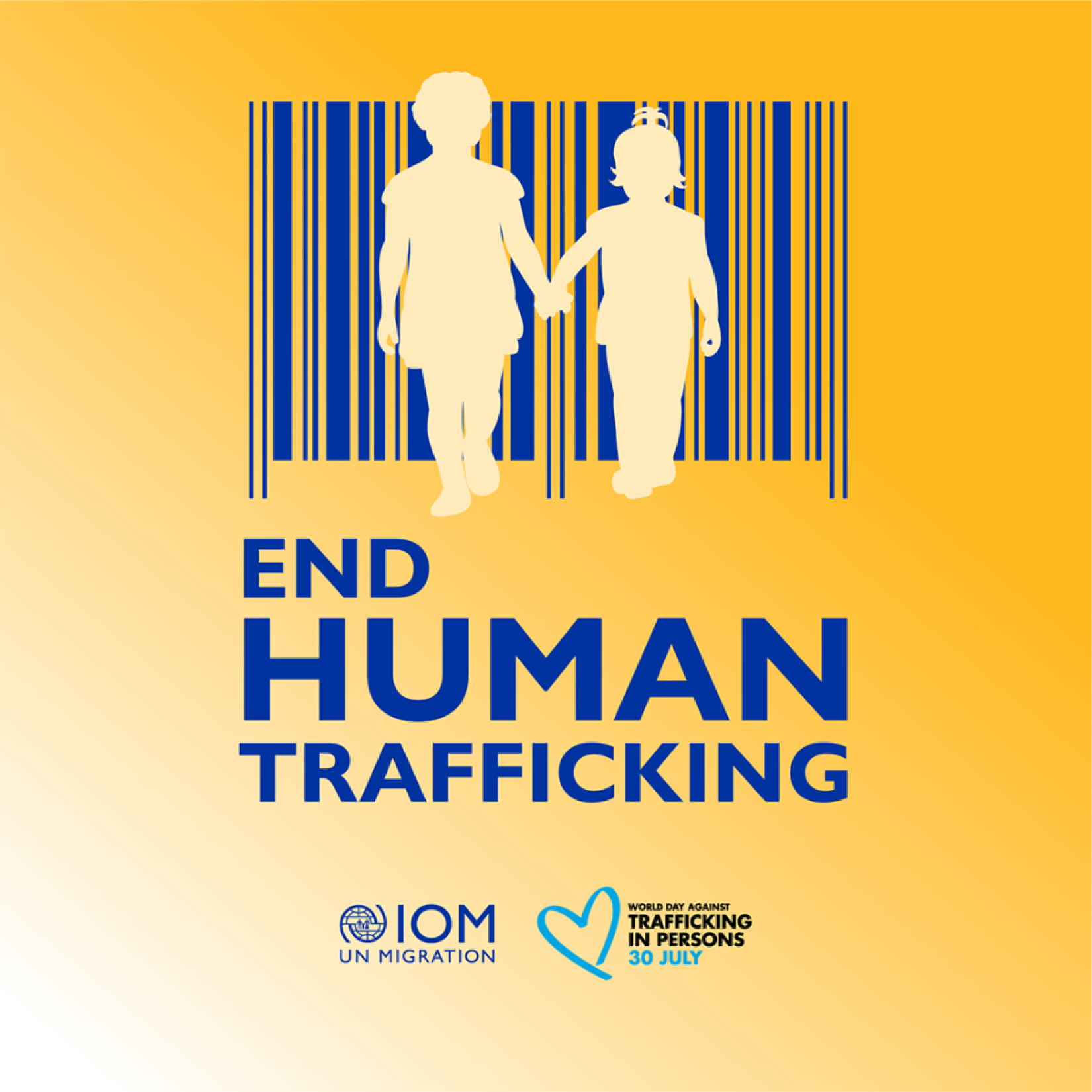Keeping Southern Africa Safe from Child Trafficking
30 July 2024
The Southern African region is home to a significant population of children. It is a region where traffickers source, Arbour and exploit their victims.

Pretoria – On this World Day Against Trafficking in Persons with the theme ‘Leave No Child Behind in the Fight Against Human Trafficking’’, the International Organization for Migration (IOM) calls upon the communities in Southern Africa to join hands in the fight against child trafficking.
Globally, one in three identified victims of trafficking is a child. The Global Report on Trafficking in Persons published by the United Nations Office on Drugs and Crime (UNODC)shows an increase in the percentage of child victims, from 28 per cent in 2014 to 35 per cent in 2021. Children are trafficked for forced labor, sexual exploitation, forced marriage, exploitative begging, illegal adoption and removal of organs, amongst other things. Boys are now increasingly targeted for human trafficking for forced criminality. Traffickers exploit the vulnerabilities created by poverty, conflict, and the effects of climate change.
The scale of human trafficking globally, regionally and at country level remains difficult to estimate as it continues to be an underreported crime. In Sub Saharan Africa, human trafficking takes place within, and outside the region, with agrowing number of countries where cases are detected. Children account for the majority of detected trafficking victims in the region. Between 2019 - 2020, the rate of child victims per 100,000 population increased by 43%. They are subjected to physical or extreme violence at a rate almost two times higher than adults. Between 2002 and 2022, the Counter Trafficking Data Collaborative (CTDC) dataset has a record of nearly 2,000 victims trafficked in the East, Horn and Southern Africa regions. Overall, victims were trafficked for the purpose of sexual exploitation (47%), forced labour (35%) and other types of exploitation (18%).
The Southern African region is home to a significant population of children. It is a region where traffickers source, Arbour and exploit their victims. The Southern African migratory routes are among major corridors for thousands of young men, including boys, who embark on their journeys often crossing as many as five countries for the purposes of education, family reunification, and employment. Migrant children often endure extreme physical hardships and are targets of abuse, exploitation and violence while on the move, this includes human trafficking.
Traffickers have strong community networks along these routes. The recent analysis by IOM and the FXB Center for Health and Human Rights at Harvard University indicates that globally, more than half of the child victims reported the involvement of friends and families in their recruitment into trafficking. False promises were the most common means of control reported by children (58.9%), followed by psychological and physical abuse (56.3% and 50.6%, respectively). Use of threats against the victims (39.5%), as well as the use of excessive working hours to control them (36.5%), were also reported by a sizeable share of child victims.
“There is no place for child traffickers in Southern Africa. Protecting children from human trafficking is the duty of everyone. Families, communities and governments, need to work together in responding to the context-specific drivers and vulnerabilities of child trafficking. Protection is key including through putting strong inclusive systems in place to ensure no child is left behind” said Mati Hashemee, IOM Regional Director for Southern Africa.
“Combatting trafficking in persons should remain an international priority, with responses tailored to the context of each country, and to the complex intersection of individual, community and societal factors affecting children. Key measures to ensure a safer Southern Africa may include strengthening the evidence base on trafficking, preventing and reducing vulnerability to trafficking, protecting and assisting child victims, and enhancing partnership and coordination. A critical component of countering trafficking is up-to-date and reliable data, to empirically ground interventions. At present, actionable data are limited; child victims are typically hard to reach.” said Fitriana Nur, IOM’s Senior Regional Specialist for Protection.
_______________
For further information please contact: Abibo Ngandu (angandu@iom.int)









